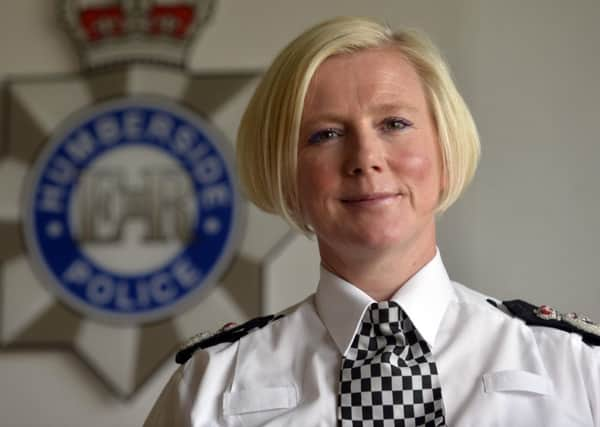Shake-up sees more police working at night


Humberside Police says eight thousand people in East Yorkshire and North Lincolnshire were seen last year after being offered an appointment to discuss a crime or raise a concern, but as many as 68,000 could have been.
Chief constable Justine Curran, who is aiming to save her force £31 million a year by 2019, says a new strategy detailed in The Future of Humberside Police document will mean many more people will now be seen in this way rather than waiting for a visit at their home.
Advertisement
Hide AdAdvertisement
Hide AdShe said the total number of appointments made would be “somewhere in the middle” between 8,000 and 68,000, but added: “We need to make a decision about when it is appropriate to do that for people.”
The new strategy will see response officers re-organised so there are more available when needed, and Ms Curran says there will be 100 extra officers ready to be called out over the day.
Currently, she says the force has as many officers available at 7am as it does at 7pm, despite demand being four times higher in the evenings, and the lowest staffing level in August despite it being the busiest month.
The force says allowing people to come to police buildings at convenient times for “low-level issues” will help them better manage demand and avoid victims waiting all day for a response.
Advertisement
Hide AdAdvertisement
Hide AdMs Curran said: “Something like criminal damage, you are not particularly upset about it, maybe a bit angry, but not vunerable. We then say ‘come and make an appointment’ so you are not waiting for two days.”
Between 2015 and 2019 the force will lose some 200 police officers and 500 police staff. The 1,563 officers set to be in place by March next year is already a 24 per cent reduction from 2010.
In July, a report by watchdog Her Majesty’s Inspectorate of Constabulary (HMIC) described the force’s position as ‘good’ and said progress was being made in coping with funding cuts, but that it “still faces a significant challenge”. It said: “HMIC is concerned that Humberside Police has not yet done enough to achieve a secure financial position for the future.”
Among other proposals in the force’s strategy is a new shift pattern made up of three more flexible teams and staggered start times, and the removal of geographical divisions.
Advertisement
Hide AdAdvertisement
Hide AdMore policing services will move into buildings used by councils or other emergency services, though Ms Curran says there are “no specific plans to drastically change” how the force uses its existing estate.
According to the force, only 20 per cent of calls to its switchboard are crime-related and more than twice as many could be dealt with at the first point of contact than currently are.
Hundreds of staff will be working at its ‘command hub’, which will take calls from the public and perform other vital functions, and training will be provided so they have more confidence in using their own common sense when responding.
Ms Curran said: “We will be empowering them to use their skills to make common sense decisions rather than slavishly follow the tick-box formula of ‘this is what you have to do’.”